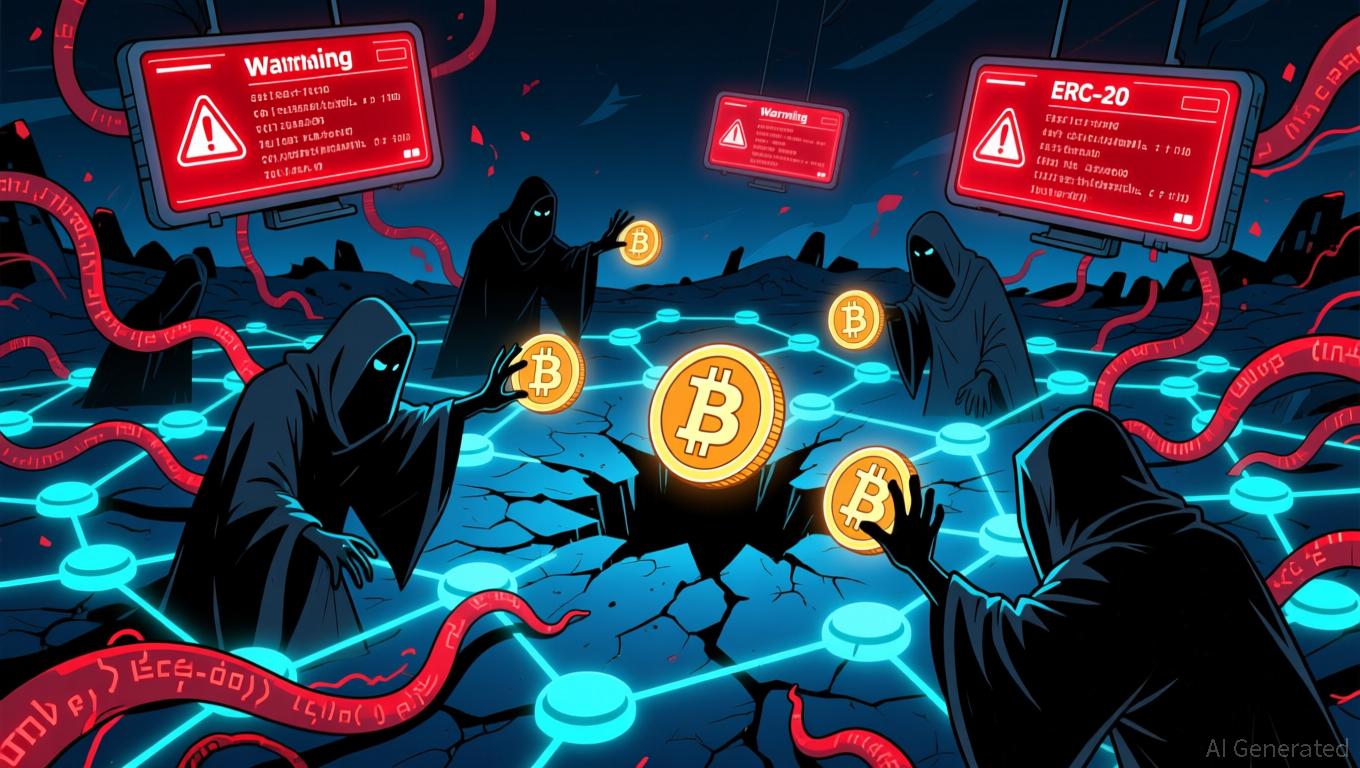Vitalik Buterin Backs ZKsync, Igniting Fresh Hopes for Layer 2 Scaling
- ZKsync's Atlas upgrade (Oct 2025) achieved 15,000 TPS and $0.0001 per transfer costs via RISC-V-based zkVM, solving Ethereum's scalability limitations. - Vitalik Buterin's endorsement catalyzed institutional adoption, with Deutsche Bank and Sony leveraging ZKsync for cross-chain settlements and data privacy. - ZK token surged 50% post-endorsement, while ZKsync's TVL reached $3.5B by 2025 through EVM compatibility and liquidity interoperability breakthroughs. - Upcoming Fusaka upgrade (Dec 3, 2025) aims t
The ZKsync Atlas Upgrade: A Leap Forward in Technology
Launched in October 2025, the ZKsync Atlas upgrade represents a significant advancement in zero-knowledge (ZK) technology. With the introduction of a high-speed sequencer that can handle more than 15,000 transactions per second (TPS) and reduce transaction confirmation times to just 250–500 milliseconds,

Another major innovation is the zkSync OS, a flexible operating system layer that accommodates various execution environments, including full EVM compatibility. This means Ethereum contracts can run on ZKsync without modification, removing barriers that have previously restricted cross-chain liquidity.
Vitalik’s Endorsement: Boosting Institutional Trust
Vitalik Buterin’s public commendation of ZKsync—describing its progress as “underrated and valuable”—has elevated the importance of the Atlas upgrade beyond just technical communities.
This wave of institutional participation is further highlighted by
Strategic Impact on Ethereum and DeFi
The effects of the Atlas upgrade go far beyond improved performance.
Additionally, the integration of the ZKsync Gateway—a trustless protocol for cross-chain interoperability—has removed obstacles between Ethereum’s Layer 1 and Layer 2. By enabling instant liquidity transfers, it reduces reliance on bridges, which have historically posed security risks. This change not only boosts market efficiency but also supports Ethereum’s broader vision of a cohesive, multi-layer blockchain system.
Looking Ahead: Fusaka and Future Prospects
Looking to the future,
Nonetheless, there are still hurdles to overcome. Regulatory attention on ZK-based privacy tools, especially after the crackdown on Tornado Cash, means ongoing development of compliance-friendly protocols is essential.
Conclusion
Vitalik Buterin’s support for ZKsync is more than just recognition of its technical achievements—it signals a strategic direction for Ethereum, emphasizing the importance of robust, interoperable Layer 2 solutions. The Atlas upgrade has proven that
With the Fusaka upgrade on the horizon and ZKsync’s ecosystem growing, the question is no longer whether Ethereum can scale, but how rapidly the rest of the industry will adapt to these advancements.
Disclaimer: The content of this article solely reflects the author's opinion and does not represent the platform in any capacity. This article is not intended to serve as a reference for making investment decisions.
You may also like
Secure Blockchain, Misleading Agreements: Spoofing Incidents Increase on Monad
- Monad's mainnet faces spoofing attacks as scammers use smart contracts to mimic ERC-20 token transfers, misleading users with fake logs. - Co-founder James Hunsaker clarifies the network remains secure, but external contracts exploit EVM openness to create deceptive transactions. - Over 76,000 wallets claimed MON tokens in airdrop, creating high-traffic conditions that attackers leverage through fabricated swaps and signatures. - Security experts warn users to verify contract sources and avoid urgent pro

Bitcoin Latest Updates: Worldwide Regulatory Changes and Major Investors Propel Bitcoin and Brazil's Markets Upward
- Bitcoin surged to $91,500 amid institutional adoption, Fed rate cut expectations, and post-halving rebound, despite $3.79B ETF outflows and inherent volatility. - Brazil's stock market hit records after tax reforms exempted low-income households, aligning with global redistributive policies and boosting 15 million earners. - Binance delisted BTC pairs like GMT/BTC for regulatory compliance, while on-chain metrics signaled crypto market consolidation and mixed altcoin prospects. - Global macro risks persi
Ethereum Updates Today: ETH Bishkek 2025: Igniting the Web3 Movement in Central Asia
- Central Asia's first Ethereum hackathon, ETH Bishkek 2025, aims to boost Web3 development through workshops and mentorship for local developers. - Hosted by TAIKAI.network and ETHGlobal, the event seeks to strengthen blockchain infrastructure and dApp innovation in the region. - The hackathon aligns with Ethereum's Fusako upgrade and price rebound, highlighting decentralized tech's potential to drive regional adoption despite limited institutional funding. - Grassroots initiatives like this could positio

Solana News Today: Deceptive Chrome Extension Secretly Drains Solana Assets by Abusing User Trust
- A malicious Chrome extension, Crypto Copilot, secretly siphons 0.0013 SOL or 0.05% from Solana transactions via hidden transfer instructions. - The extension exploits Raydium DEX and obfuscated code to bypass detection, routing fees to attacker-controlled wallets without user awareness. - Despite a takedown request, the extension remains available on Chrome Web Store, highlighting growing browser-based crypto threats affecting 15 users as of 2025. - Cybersecurity experts warn of rising malicious crypto e